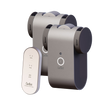Here's an overview:
- Introduction to Professional Tone in Writing
- The Importance of First Impressions in Professional Articles
- Key Elements of a Professional Tone
- Strategies for Maintaining a Professional Voice Throughout an Article
- Common Mistakes That Can Undermine Professionalism in Writing
- Techniques for Enhancing Clarity and Precision in Professional Content
- Conclusion: Integrating Professional Tone for Impactful Communication
Introduction to Professional Tone in Writing
In addressing the benefits of Dry January, it's vital to communicate with a professional tone. You want your writing to reflect expertise and respectability. To achieve this, you'll use clear and precise language, avoid colloquialisms, and maintain a formal structure. Punctuating your argument with reliable data and research adds credibility. In discussing sleep quality improvements, using a professional tone will help convey the seriousness of the topic and ensure your message is regarded with the consideration it deserves.
The Importance of First Impressions in Professional Articles
When you explore professional articles, understand that your initial engagement heavily influences your reading experience. A compelling opening establishes credibility and piques interest, setting the tone for the entire piece. In "Discover the ZZZs: How Dry January Can Lead to Better Sleep Quality," the first impression must captivate you, presenting the subject—alcohol's impact on sleep—as not only relevant but essential to your health and wellness. Such a start ensures you're more likely to value the insights provided, integrating them into your daily life for improved sleep during Dry January and beyond.
Key Elements of a Professional Tone
When addressing the subject of Dry January and its benefits on sleep, maintain a professional tone through:
- Clarity and Conciseness: Use straightforward language that directly conveys the benefits of abstaining from alcohol for improved sleep quality.
- Formality: Stick to language that is respectful and avoids casual colloquialisms or slang.
- Fact-Based Information: Provide evidence-based data to back up claims regarding the relationship between alcohol consumption and sleep disturbances.
- Objectivity: Discuss the topic impartially, free from personal bias, ensuring your content is balanced and fair.
- Politeness: Even when educating about the potential negatives of alcohol on sleep, ensure the tone remains courteous and non-judgmental.
Strategies for Maintaining a Professional Voice Throughout an Article
- Employ formal language and avoid slang, ensuring your expressions are businesslike.
- Maintain a consistent tone, aligning with the informative nature of your topic.
- Use active voice to convey clarity and directness, keeping your sentences crisp.
- Leverage industry terms when necessary, but always explain jargon for broader accessibility.
- Structure your content with clear headings and logical flow to guide the reader effortlessly.
- Present data and research from credible sources to underscore your points with authority.
- Remain objective, avoiding personal bias, to maintain professional credibility throughout the article.
Common Mistakes That Can Undermine Professionalism in Writing
When you're writing professionally, steer clear of these common pitfalls:
- Neglecting Proofreading: Spelling and grammatical errors can distract readers and detract from your message. Always proofread before publishing.
- Overusing Jargon: While specific terms may be relevant, overuse can confuse readers unfamiliar with the lingo. Use plain language whenever possible.
- Ignoring Tone: Conveying a tone that’s too casual can undermine the professional quality of your content. Maintain a formal tone that’s appropriate for the audience.
- Writing Long Paragraphs: Long-winded text can be off-putting. Break your content into manageable, concise paragraphs.
- Being Overly Wordy: Simplicity is key. Avoid using convoluted sentences and opt for clear, straightforward language.
- Neglecting Audience: Failing to consider who you’re writing for can result in content that misses the mark. Tailor your writing to meet your audience's needs and expectations.
Techniques for Enhancing Clarity and Precision in Professional Content
When drafting professional content, your aim is to convey information clearly and precisely. Start by:
- Outlining your key points to build a structured narrative.
- Selecting specific language over vague terms to avoid ambiguity.
- Employing active voice to make sentences more direct and impactful.
Remember to:
- Break complex ideas into digestible pieces, utilizing bullet points or numbered lists.
- Use data and research to back your statements, enhancing credibility.
- Implement iterations—review and refine your content multiple times.
Ensure that each sentence serves a purpose and is necessary to support your main topic. By following these strategies, you'll craft content that effectively communicates your message with the intended professionalism and authority.
Conclusion: Integrating Professional Tone for Impactful Communication
To maximize the benefits of Dry January and enhance your sleep quality, approach communication with precision and professionalism. In your discussions about abstaining from alcohol, a professional tone fosters credibility and encourages serious consideration from peers. Uphold a balanced discourse, cite credible research, and present anecdotal evidence with sophistication. Effectively articulating the sleep benefits from Dry January can inspire others to join the initiative, making a positive impact on collective health and well-being.





















Leave a comment
All comments are moderated before being published.
This site is protected by reCAPTCHA and the Google Privacy Policy and Terms of Service apply.